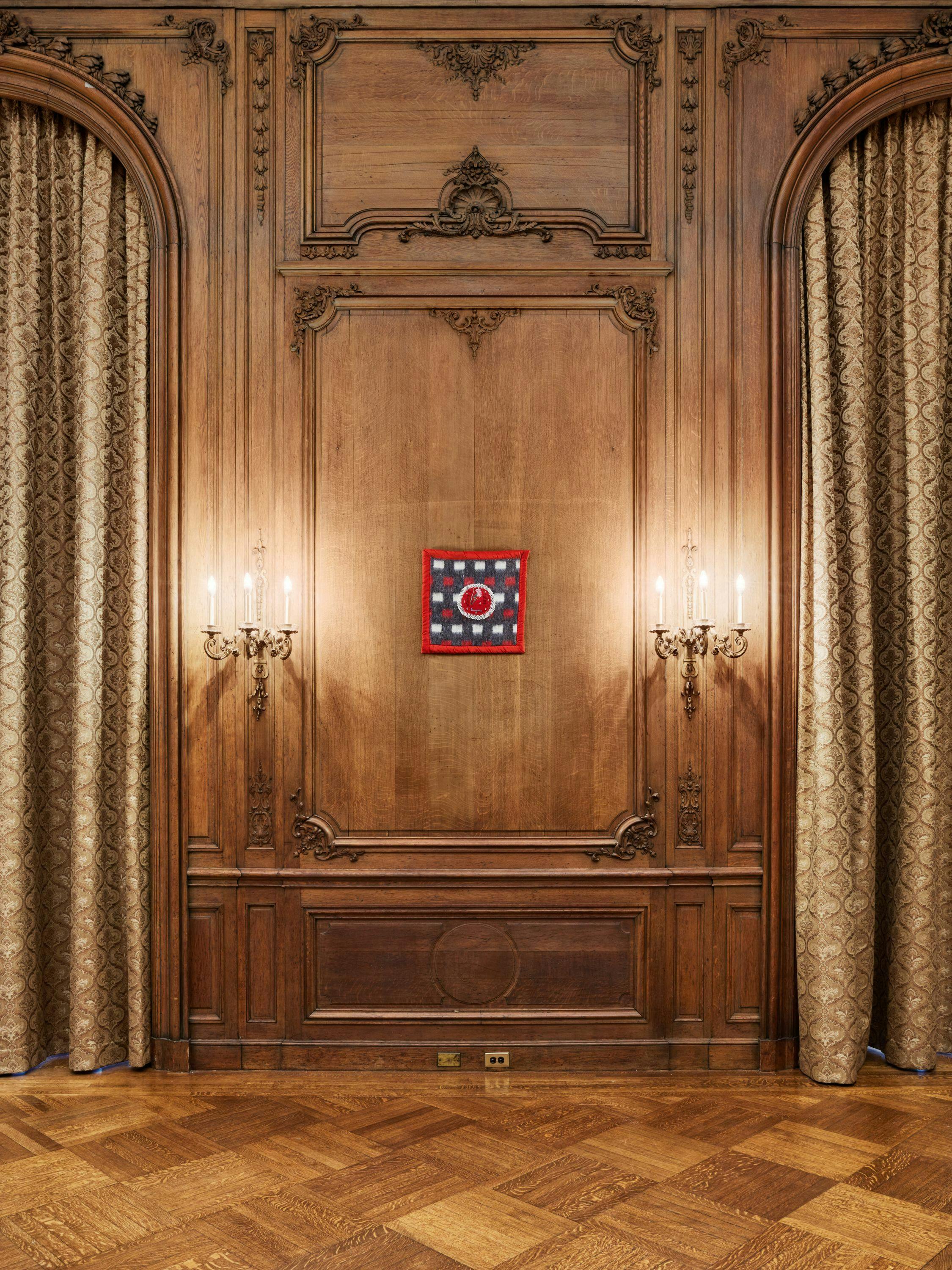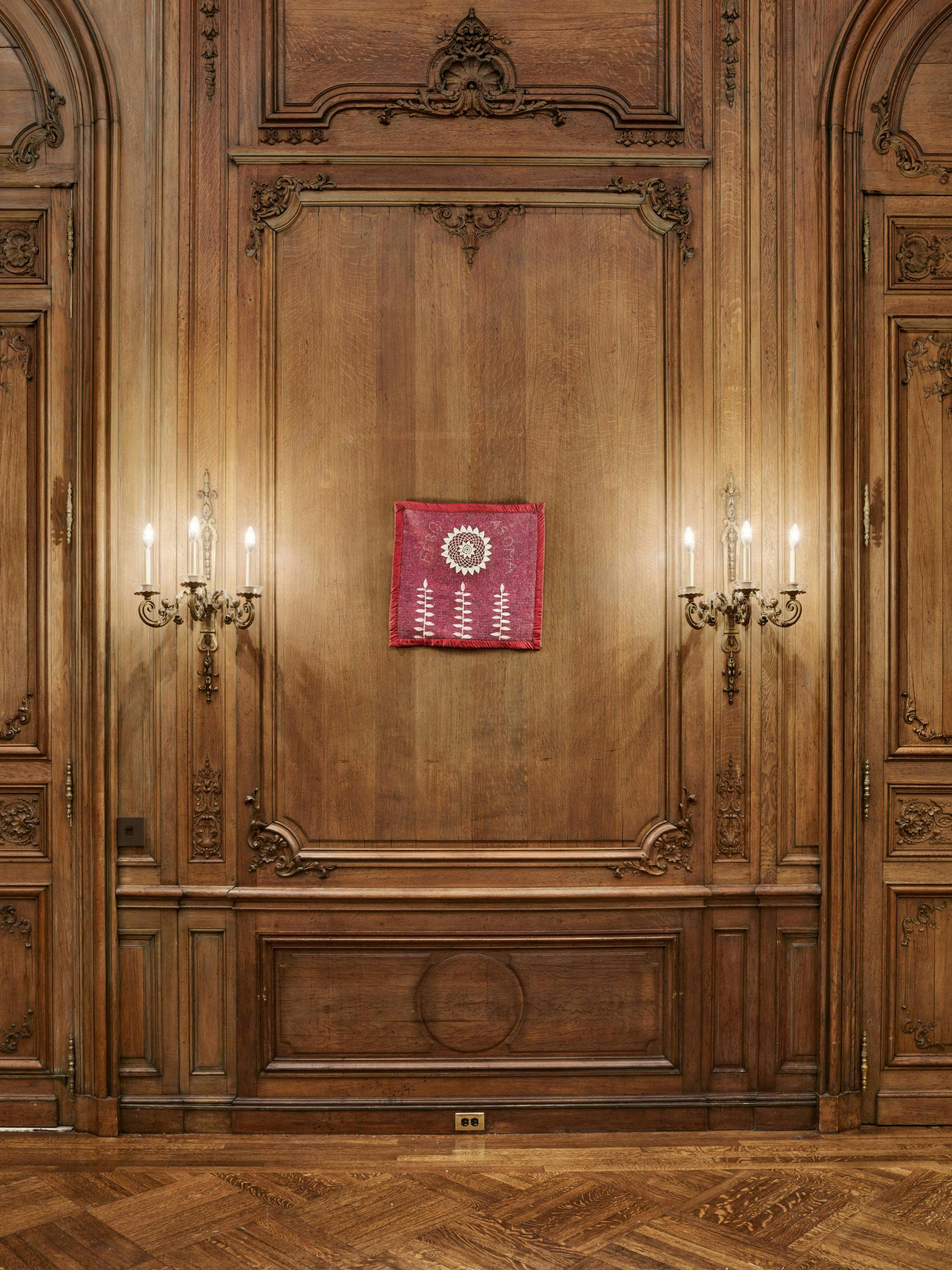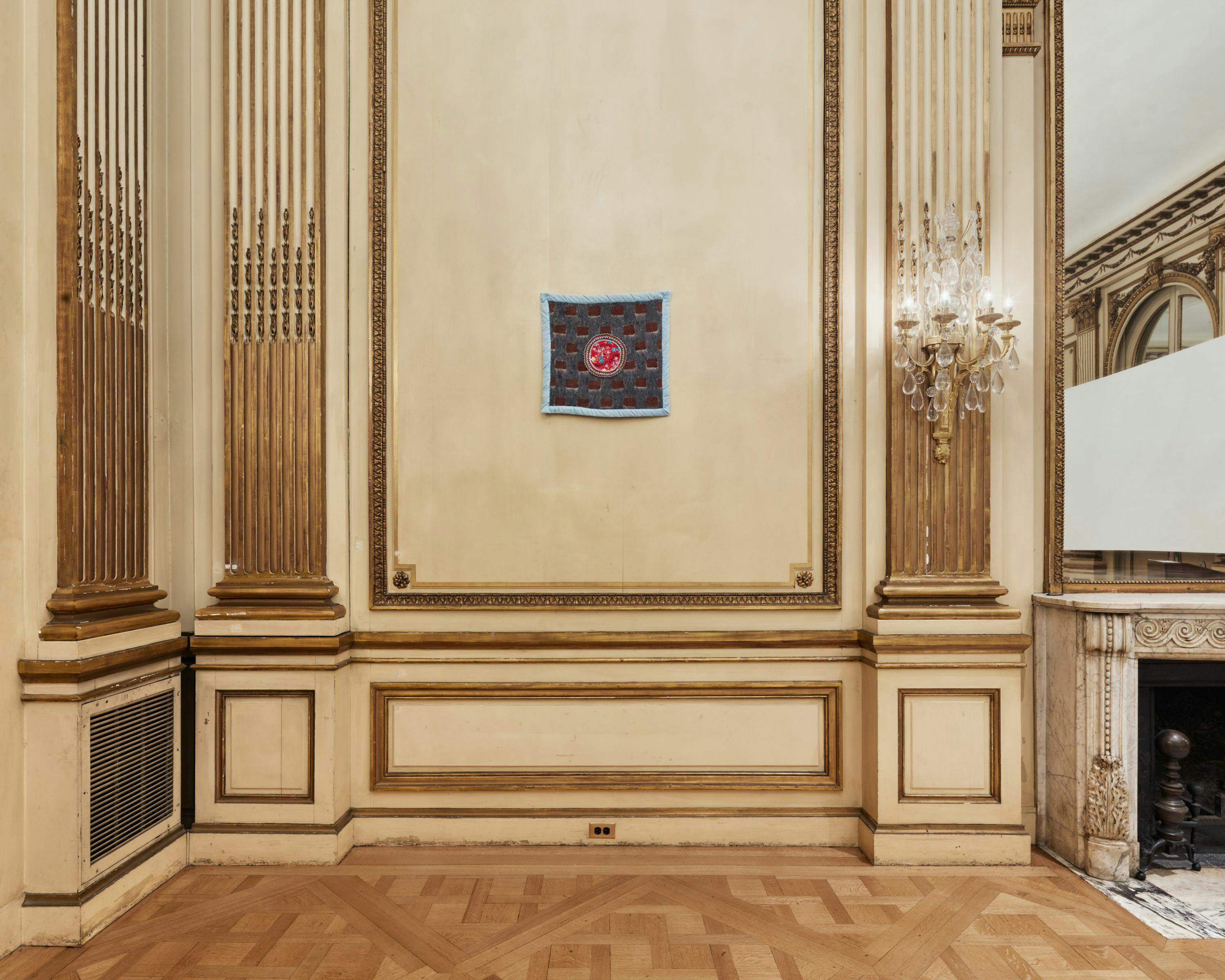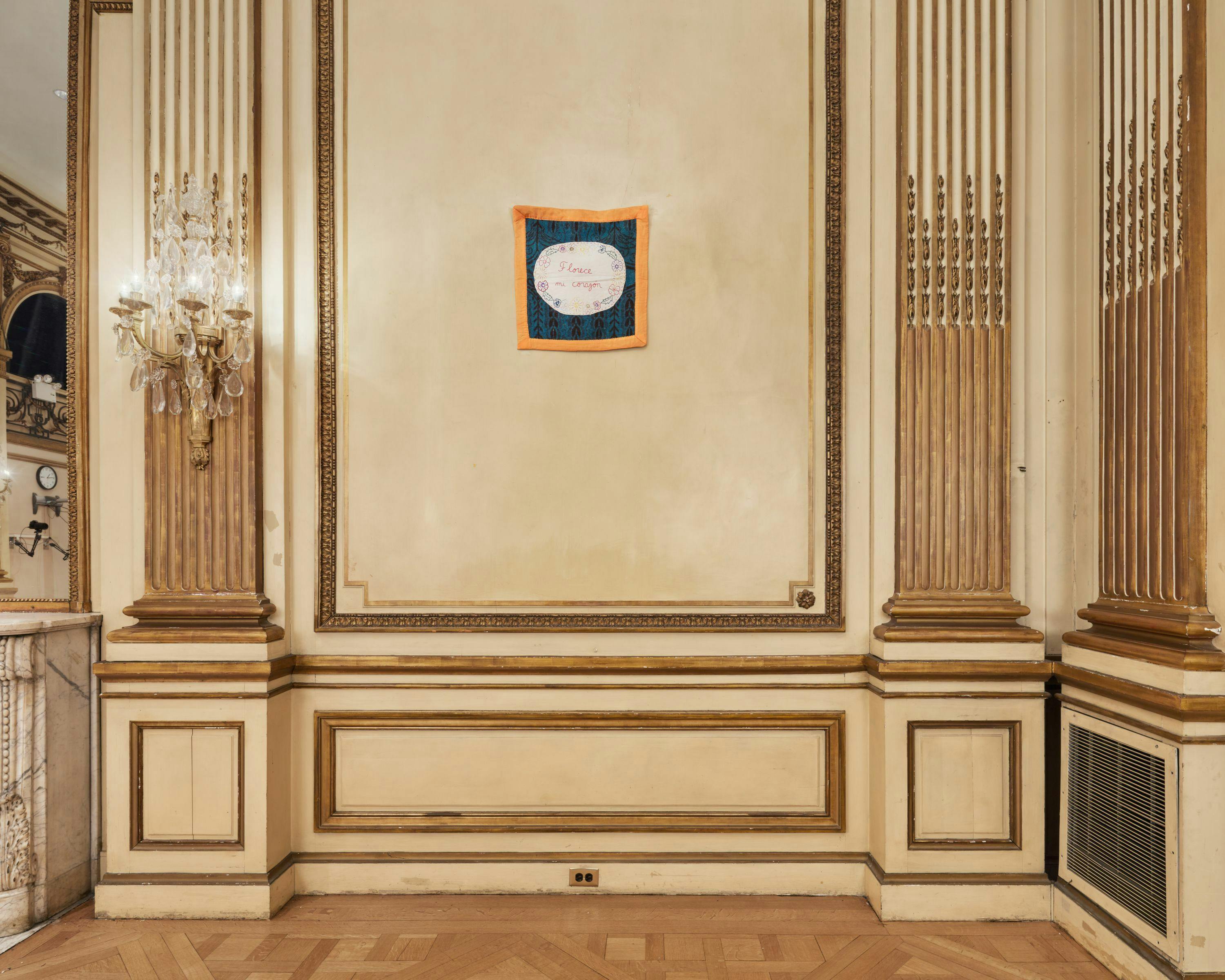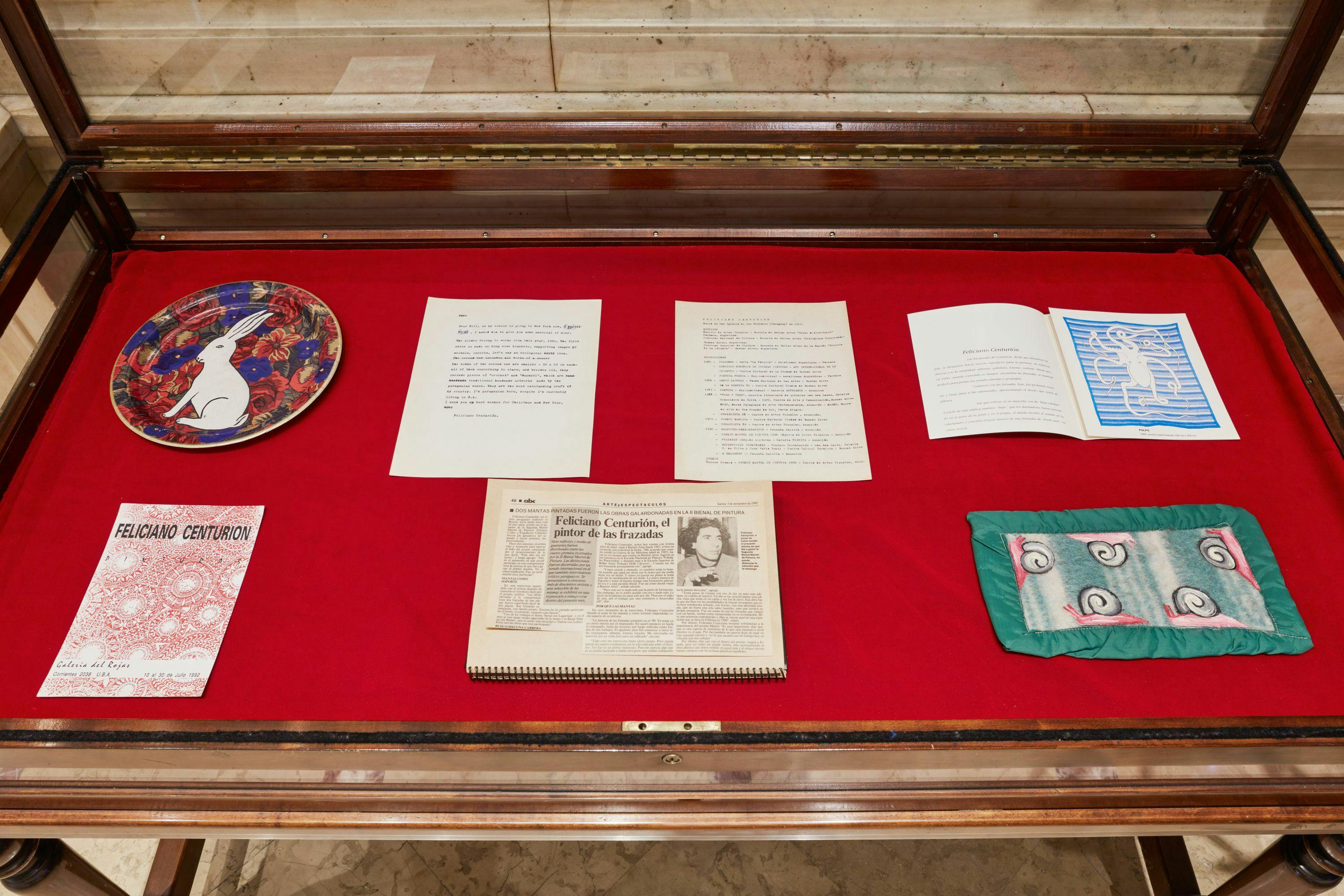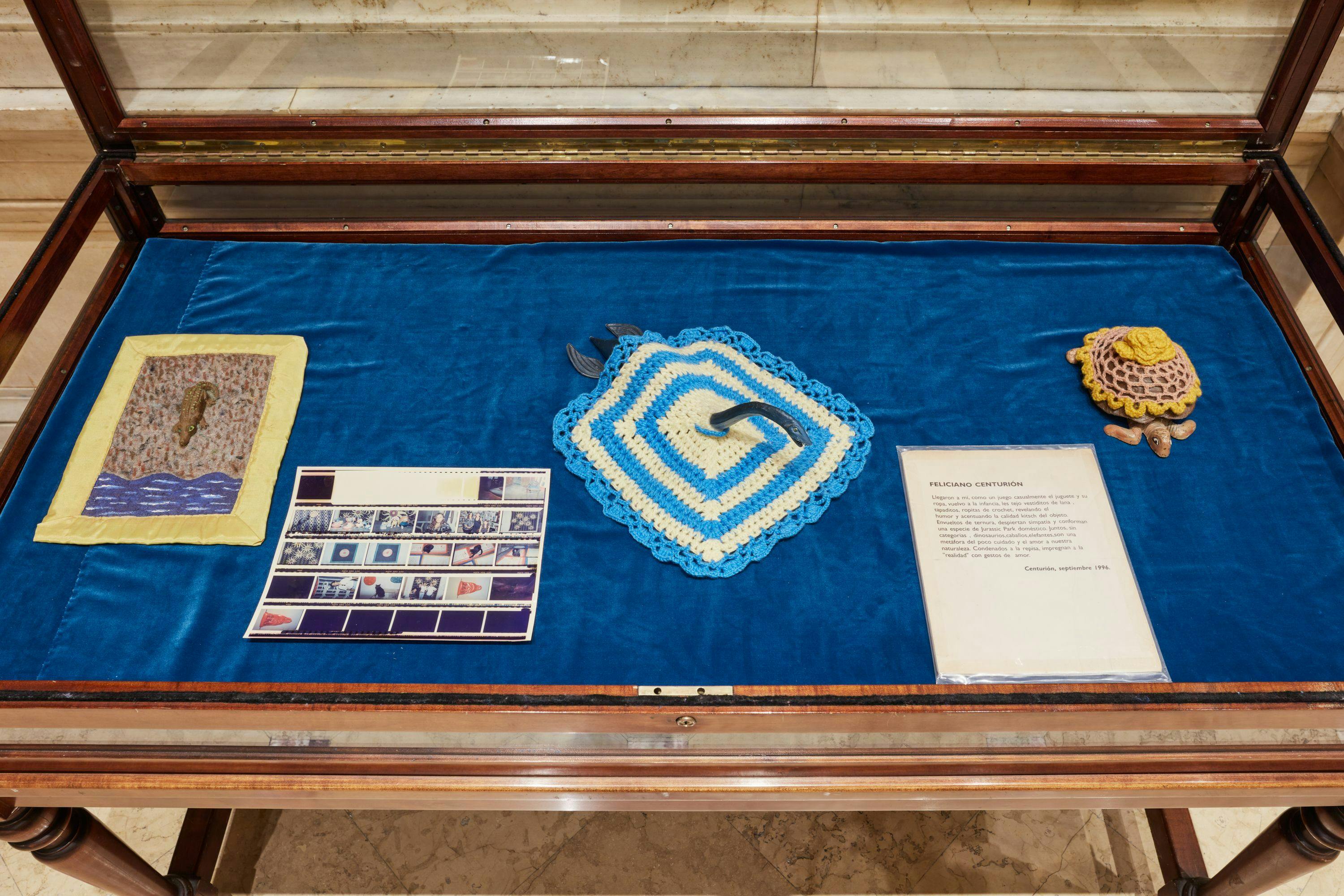VISITING HOURS
Mondays from 10:00 AM - 12:00 PM
Tuesdays from 12:30 - 2:00 PM
Fridays from 10:00 AM - 12:00 PM
Appointments are required. Please click this link to book your visit.
The Duke House Exhibition Feliciano Centurión: Telas y Textos showcases the artist’s embroideries on various readymade textiles executed between 1990 and 1994, highlighting the latter years of Centurión’s short, but prolific career.
The four major works in the exhibition feature embroidered texts, juxtaposing floral images with both political and personal phrases. The accompanying archival display presents smaller textile works including the artist’s signature whimsical animal motifs and two sculptures from his Familia series.
Centurión’s textiles reflect his upbringing in a matriarchal Paraguayan household, and his experiences as a queer artist in Buenos Aires, Argentina, where he lived for most of his life. He often incorporated historically feminized crafts such as knitting, crocheting, and embroidering. Throughout his practice, Centurión incorporated ordinary household items such as frazadas (blankets), handkerchiefs, and pillowcases bought from local street markets. The prevalence of textiles in Centurión’s work is in keeping with Guaraní weaving tradtions and reflects the influence of the Indigenous cultures native to Argentina, Bolivia, Brazil and most ubiquitously, Paraguay, where Guaraní is one of the country’s two official languages.
The craftworks in this exhibition apply the technique of ñandutí (meaning “spider web” in Guaraní), an intricate method of lace weaving traditionally passed down from mother to daughter. As seen in the four larger works in the exhibition, a key identifying characteristic of these weblike fabrics is the round center, called the “apyte,” from which geometric forms then radiate. Centurión’s early works were bright, brash, abstract figurative compositions that evolved into the embroidered blankets seen in the exhibition.
Having witnessed military dictatorships in both Paraguay and Argentina during his lifetime, Centurión flourished in Argentina after the collapse of the country’s authoritarian regime in 1983. He found a lively community at the Centro Cultural Rector Ricardo Rojas in Buenos Aires and participated in 31solo exhibitions in Argentina and Paraguay between 1990 and his death in 1996. After being diagnosed with HIV in 1992, Centurión began chronicling his declining health by weaving texts onto increasingly smaller and more intricate fabrics. The sentimental words expressing notions of love, desire, and longing for home, coupled with the soft textiles convey a humanizing sense of warmth, intimacy, and comfort, which contrasted with the public stigmatization of the virus and its victims brought on by reckless government policies and media reports. He also used bright colors and animals from his childhood, such as snails and crocodiles, to present kitsch imagery as both humorous anecdotes and bold declarations of life. Centurión’s frazada works celebrate his matrilineal upbringing and Paraguayan heritage, using embroidery to subvert gender norms, express his queer identity, and elevate the status of textile art to that typically reserved for high art.
Feliciano Centurión (1962-1996) was a Paraguayan textile artist and painter. Born in San Ignacio, Paraguay, his family fled to Formosa, Argentina to escape Alfredo Stroessner’s military dictatorship in Paraguay. In Formosa, he studied plastic arts at the Oscar R. Albertozzi School of Fine Arts. He then permanently relocated to Buenos Aires, Argentina, where he studied painting at the Prilidiano Pueyrredón School of Fine Arts, and the Ernesto de la Cárcova Superior School of Fine Arts. Centurión’s first solo exhibition was held in 1982 at the Estimulo de Bellas Artes in Asunción, Paraguay. Throughout the late 1980s and the 1990s, he was a prominent figure at the Centro Cultural Rector Ricardo Rojas in Buenos Aires. During this time, he exhibited works in Buenos Aires and Asunción, and represented Paraguay in the fifth Havana Biennial in 1994. Centurión passed away at 34 years old due to AIDS-related complications.
Most recently, Centurión’s works have been the subject of a solo presentation in Affective Affinities, the 33rd São Paulo Biennial, São Paulo (2018); Abrigo, Americas Society, New York (2020); and Ñande Róga, Hessel Museum of Art, Annandale-on-Hudson, New York (2021). Group exhibitions include Bodies of Water at the 13th Shanghai Biennale, Shanghai (2021); and Eros Rising: Visions of the Erotic in Latin American Art at the Institute for Studies on Latin American Art (ISLAA), New York (2022).
Special thanks to Professor Edward J. Sullivan for providing faculty support for this exhibition.
The Institute for Studies on Latin American Art (ISLAA) provided funding and extensive archival and research support. The works on view are on generous loan from the ISLAA collection.
INSTALLATION IMAGES
Feliciano Centurión (1962–1996) was born in San Ignacio de las Misiones, Paraguay, in 1962 and settled in Argentina in 1974. Celebrated for his introspective work, he is best known for his embroidered and painted textiles that engage with folk art and queer aesthetics, produced using repurposed cloth and often embellished with diaristic phrases. Centurión was part of the group of artists associated with the gallery of the Cultural Center Ricardo Rojas at the University of Buenos Aires in the 1990s and represented Paraguay in the fifth Havana Biennial in 1994. His first retrospective in the United States, Feliciano Centurión: Abrigo, was presented at Americas Society in New York in 2020.
